Communication Design faculty, Sam Galison, is a transdisciplinary artist, designer, and technologist based in New York City. He has a background is in the theater and circus, and currently works with a combination of digital and traditional craft practices to create compelling, immersive experiences in a wide variety of media. His work makes use of techniques ranging from ink and pencil to optical glass fabrication to music composition and experimental, interactive electronics. He has worked as a graphic, web, and physical-media designer at various agencies in New York, and for various individual and institutional clients. He is currently the Design Lead at the New School’s Center for Data Arts, where he oversees the visual, technical, and experiential aesthetics of CDA’s outward-facing projects.

UNFAMILIAR – 2016. hand-blown optical glass, wood, cement, steel, 4-channel audio, 6-channel video, custom software.
Sam holds a BA in “Affective Engineering” from NYU Gallatin and an MFA in Digital + Media from RISD. Affective Engineering is a self-designed major drawing from the Interactive Telecommunications Program in Tisch as well as from fine art, philosophy, design, and engineering to understand the mechanisms and implications of empathy in a creative context. His thesis at RISD culminated in a written book and multimedia installation, both centered on the phenomenology of being present and the uncanny distance between lived experience and abstracted, mediated, or archival memory.

ONE TO HOLD, ONE TO ECHO – 2015. mirrored glass, archival video, projection, live audio + video performance (10 min)
In both his studio and design work, Sam strives to find meaning in the noise of everyday experience, and clarity in the chaos of an oversaturated media environment.

FOR A MOMENT – 2016. digital inkjet print, recycled paper, foil-stamped cover stock, custom software.
How did you get into design? Was there a defining point in your career, and if so, how did it shape you as a designer?
I got into design through fine art, and design is still a way for me to support my work as a studio artist. My first real “design” project was in high school – I was on the staff of our school’s literary magazine, and since nobody else wanted to deal with the graphic design, I took over and learned InDesign so we could send the magazine to a real printer. I didn’t go to school for design; I learned by working, picking up skills and technique as needed for the various jobs I’ve had. I don’t know that there’s a “defining point” in my career, but I really found my voice as a designer working with Che-Wei Wang and Taylor Levy of CW&T in and after college. I’d never met such versatile designers; their work spans product, industrial, graphic, web, and interaction design. I learned so much in their studio, and they’ve been close friends and mentors since.

WE NEED TO TALK – 2015. copper, bone conductor speakers, custom electronics, poetry, recorded audio, steel, wood.
Outside of other design and illustration, what sorts of things inspire and influence your work?
As an artist, I draw inspiration from philosophy, mythology, and the natural sciences. I consume as much as I can, in all disciplines: everything from fiction to dance to painting to music. That kind of creative literacy is what keeps my work from stagnating. Much of my studio work is also influenced by studies of the mind – I work to understand and speak to lived immediate experience by studying memory, affect, empathy, and perception. That inward-focused knowledge informs and interacts with structures and problems beyond human scale, like climate change or sociopolitical waves, and I’m investigating how artwork can facilitate that interplay.
What tips would you give to anybody who is looking to get started in design?
For both art and design, I’d say: work on things that interest you. This seems obvious, but I’ve met plenty of students and designers who feel like they “should” make a certain kind of work. If you aren’t curious, excited, and invested in the work, nobody else will care about it either. For design specifically, I’d say never turn down a job because it sounds too hard or too complicated, or you feel like you don’t know how to do it. Those jobs are the ones in which I’ve learned the most, pushed my boundaries as a designer, and made the best work.

